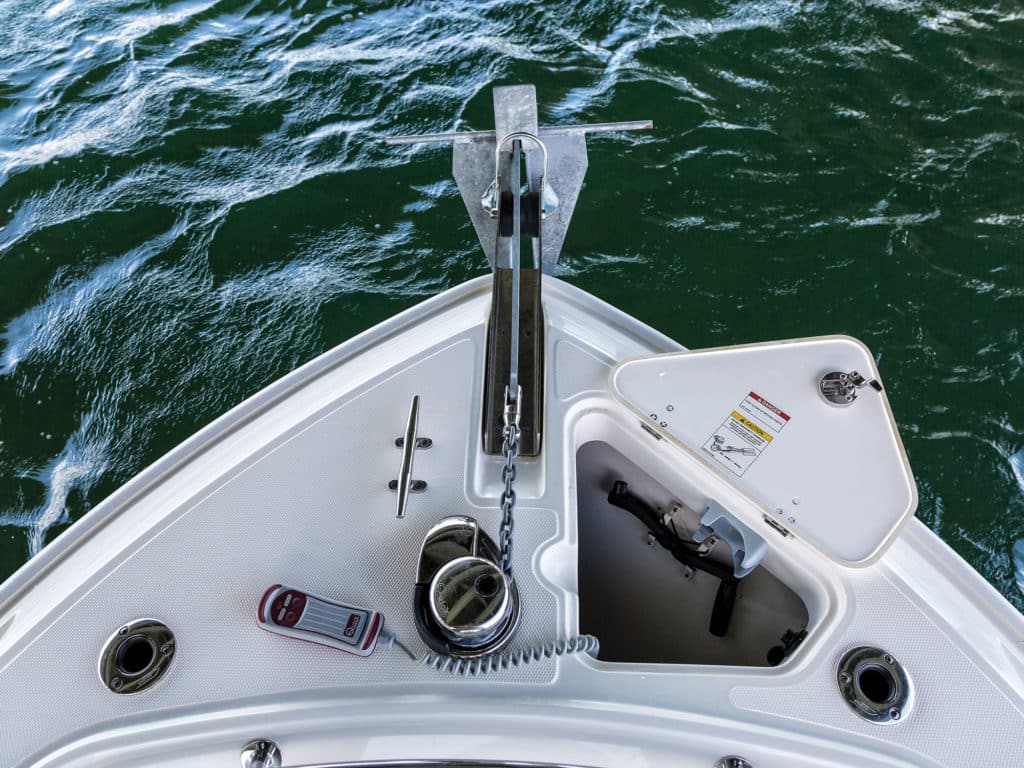
With all the new technology designed to hold a boat’s position, such as boat-control systems and trolling motors with spot-lock or virtual-anchoring features, anchoring might seem like a dying art. Yet deploying an anchor, particularly in water deeper than 100 feet with a considerable wind or current, remains the most dependable method for parking a vessel to bottomfish or target game that gravitates toward wrecks and other underwater structure.
But that’s where consensus dissolves. The type of bottom, the prevailing conditions, and even the boat’s design frequently demand changes to the gear and rigging commonly recommended for anchoring. For West and East Coast perspectives, we talked to Capt. Mark Wisch of Pacific Edge in Huntington Beach, California, and Capt. Dave Marciano, charter guide and commercial fisherman of TV’s Wicked Tuna fame, out of Gloucester, Massachusetts.
Claw Anchors
Wisch now owns a bait, tackle and marine store, but for many years he set up other people’s boats with an anchor winch or windlass. Such motorized systems might be overkill for shallow-water anchoring, but they’re a requisite for anchoring deep. On his 25-foot boat, Wisch uses a Lewmar windlass capable of retrieving and hauling aboard his rode and chain.
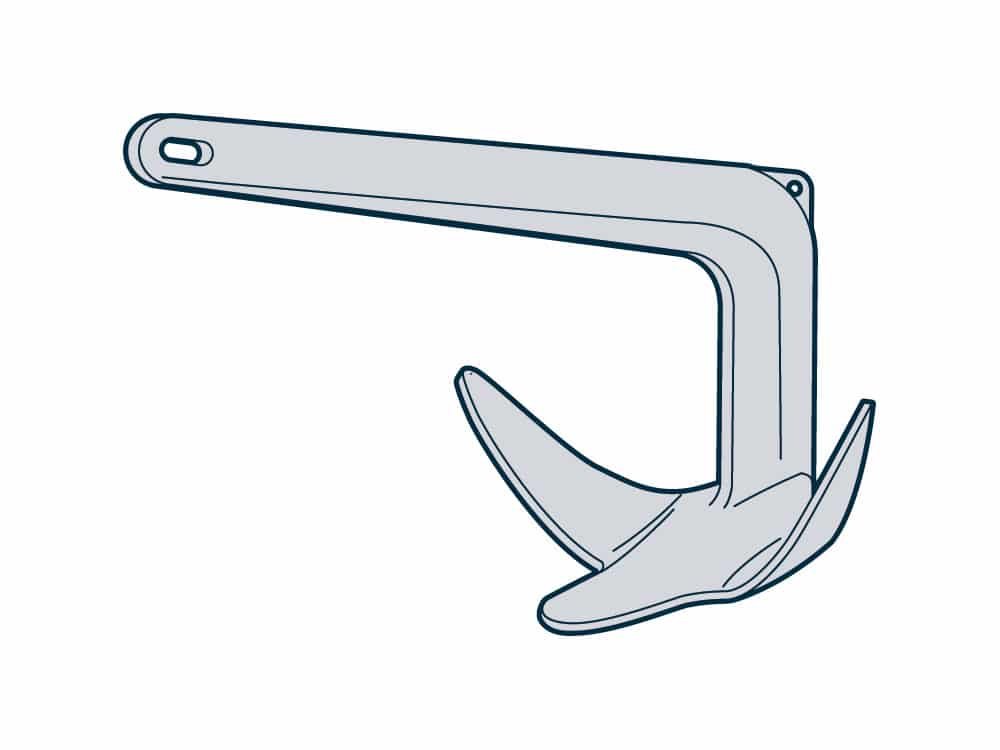
He chooses a Bruce-style or Lewmar claw anchor rather than the more common Danforth. “Danforths are not easy to set properly,” he says. “Because of their big flukes, they tend to float down. The chain drops faster and often wraps around the anchor. The beauty of a claw-style anchor is that you can let it go just about full speed.”
A Bruce or claw anchor holds better than other anchor styles when you want to use shorter anchor-line scope, which Wisch prefers. To deploy less rode, he advocates using more chain. “A lot of East Coast guys use 5 to 8 feet of chain, but that’s not enough. The rule of thumb is to use about a boat length,” he says. For an average 25-foot center-console, he recommends a 16-pound claw anchor and 30 feet of 1/4-inch high-test chain, which features smaller links.
While some captains have gone to Kevlar rode, Wisch has confidence in high-tensile nylon. He carries 500 feet (300 feet is the recommended minimum) of 1/2-inch, eight-plait braided anchor line, a flexible choice that easily stacks in a locker. To easily judge the scope at a glance, Wisch suggests wrapping 3 to 4 inches of anchor line with black electrical tape every 50 feet.
To perfect anchoring techniques, he suggests practicing with a buoy tied to a 5-pound weight. Drop the buoy on a spot, then drive up-current and drift back to gauge how far you must lead the spot before dropping anchor.
Danforth Anchors
Marciano fishes aboard 34- and 43-foot boats, each carrying a Lonestar marine anchoring system with a 24-volt drum winch wired to a battery bank. He chooses Danforth-style anchors and 70 feet of 3/8-inch chain. For rode, he uses about 100 fathoms (600 feet) of 3/8-inch Samson braid.
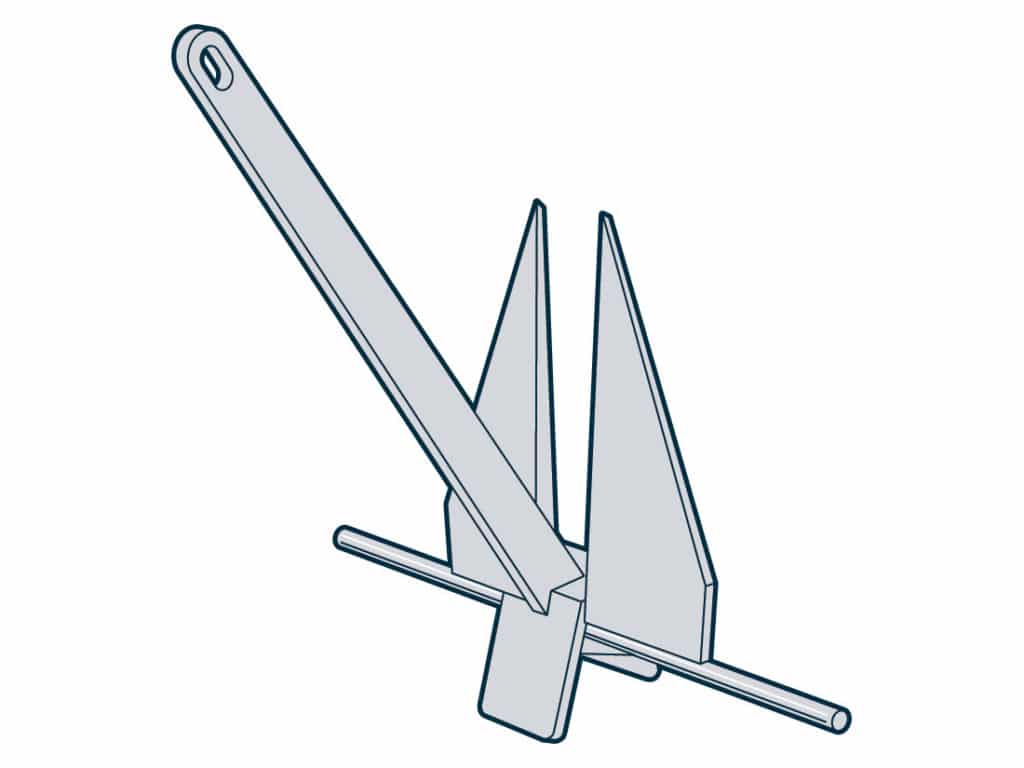
On the smaller boat, Marciano deploys a 35-pound steel Danforth anchor that he says works well on the widely diverse types of bottom he and his crew fish. On the larger boat, he resorts to a 55-size (32-pound) Fortress aluminum anchor, which is lighter but designed for a 52- to 58-foot boat. “If the anchor drags, it’s impossible to fish. So, I’ve always used oversize anchors,” he says.
Read Next: Quick-Release Anchoring Methods
Anchor-Retrieval Ring and Buoy
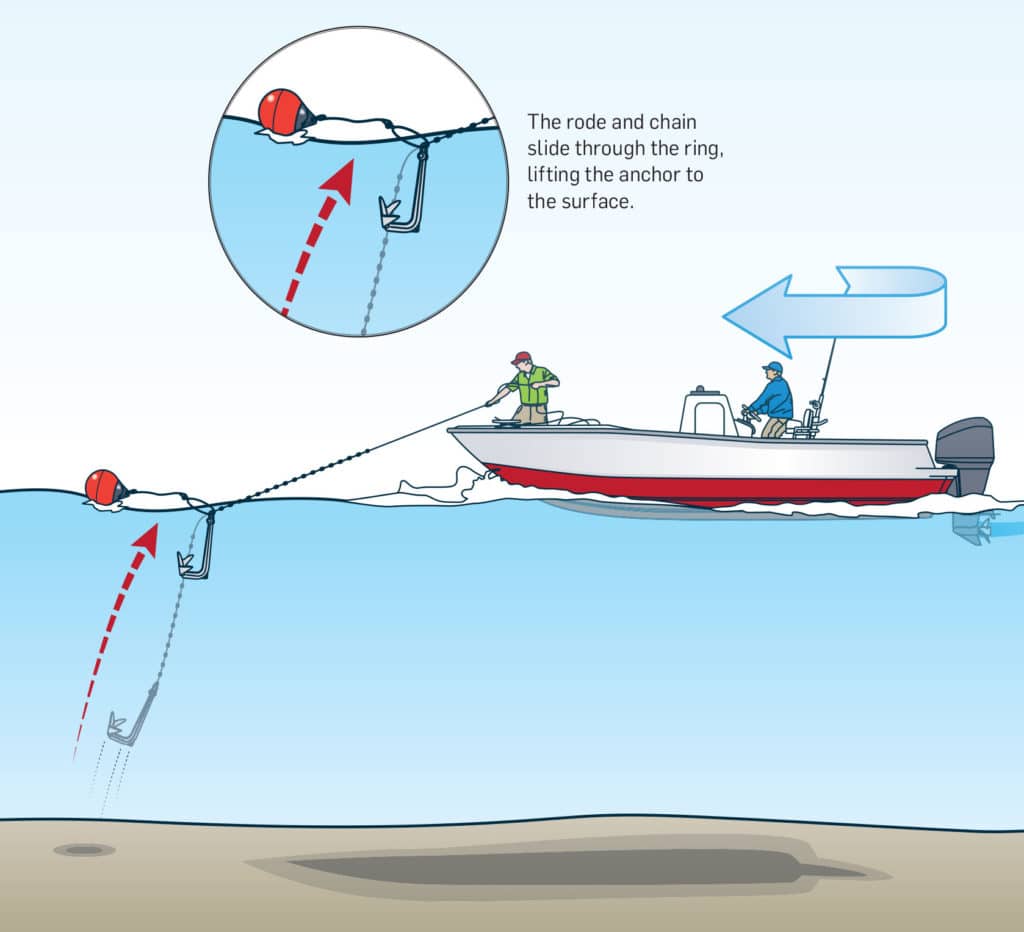
Regardless of their type and weight, sometimes anchors just stick. Most times you can drive the boat ahead of the anchor and free it like you would a stuck jig. Neither Marciano nor Wisch recommends rigging a trip line to free a stuck anchor. Marciano believes it affects how the anchor works, and Wisch says most anglers use too much wire, defeating the purpose. Both captains suggest keeping steady line tension as you deploy the gear, moving slowly aft.
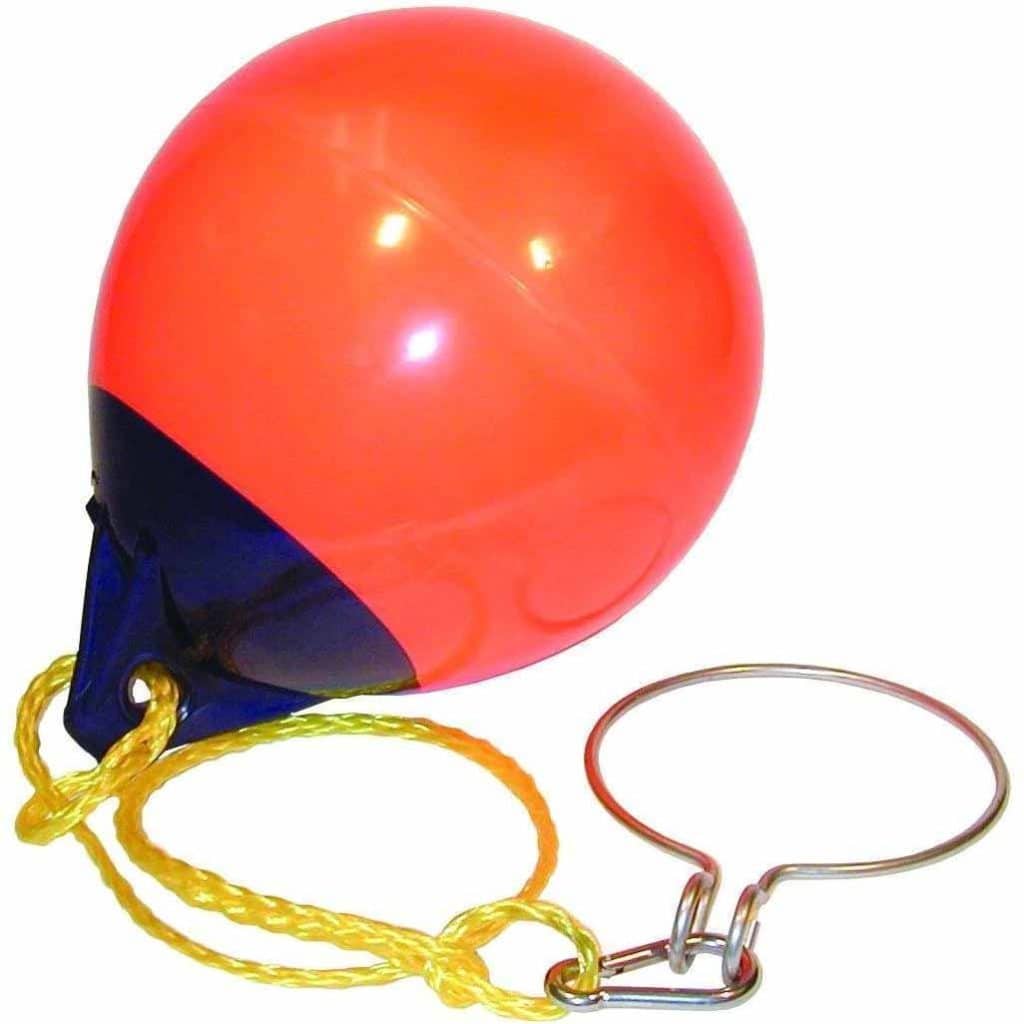
Anglers who don’t want to invest in a winch or windlass can try a simple ball-style retrieval system, such as the Anchor Master by T-H Marine. The snap ring—attached to a round buoy—fastens around the rode. The captain motors up-current, and once the ball is about 100 feet behind the boat and directly above the anchor, the chain and shank come up through the ring and the anchor hangs below the ball. “For your average weekend fisherman, that’s the best $100 they’ll spend,” says T-H Marine’s Bill Applegate.









